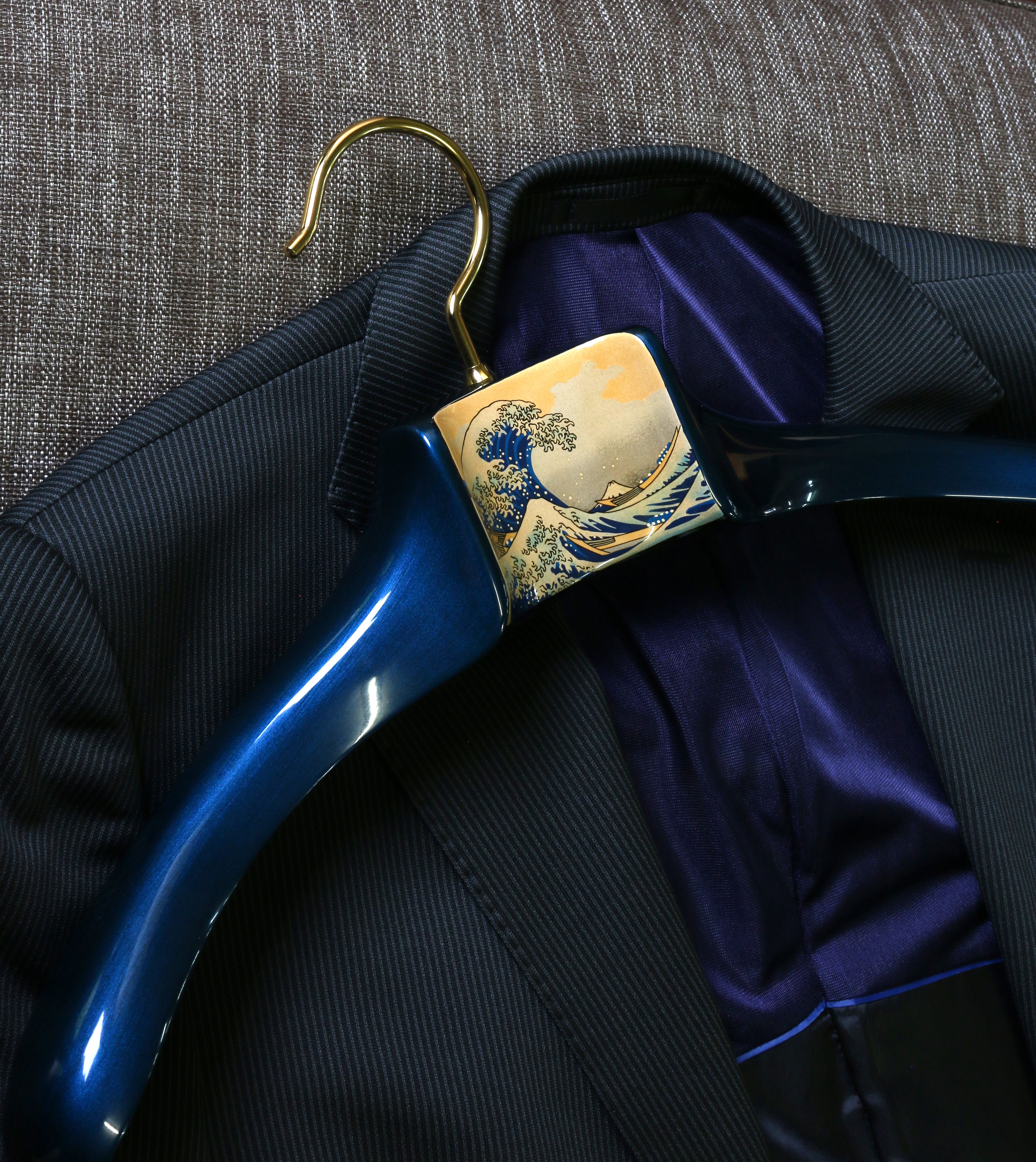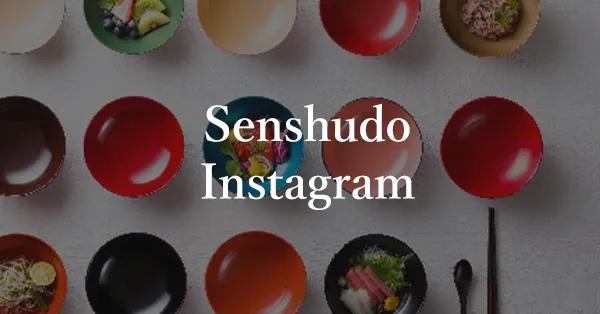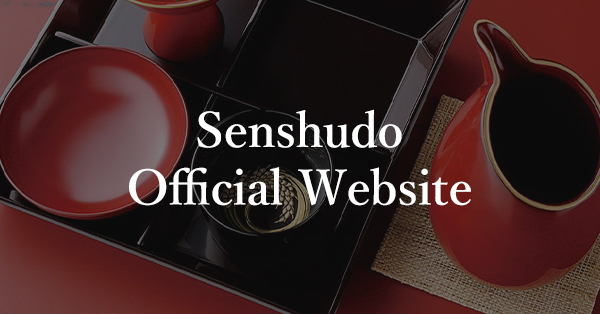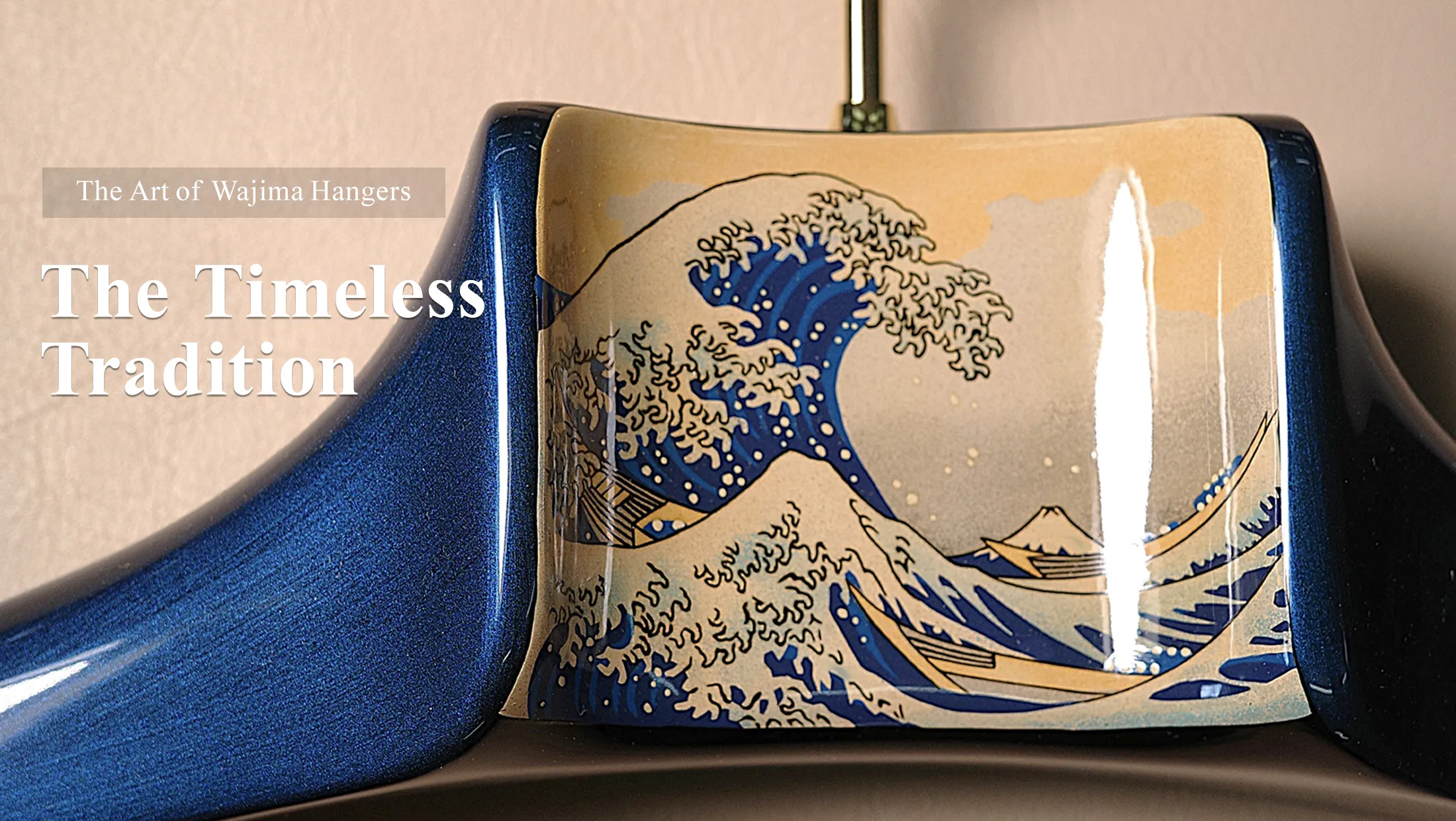
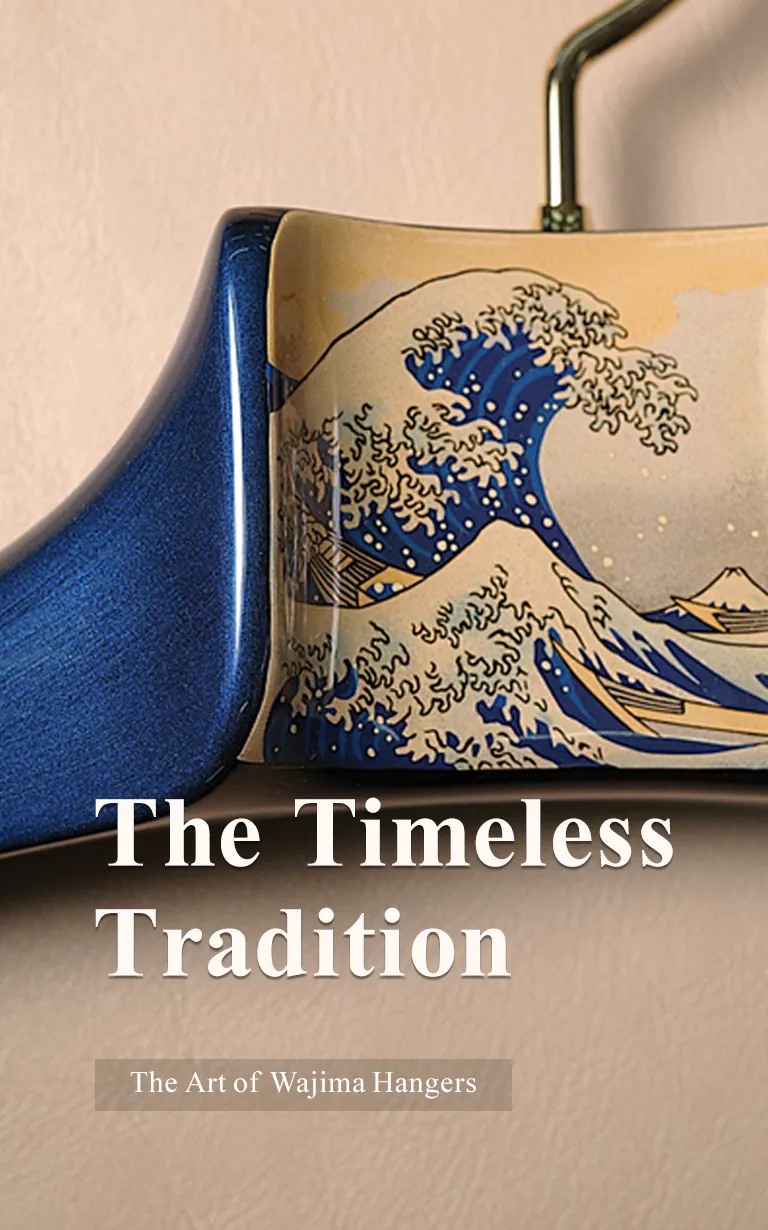
Passing on the Pride of Wajima Lacquerware for the Future
Wajima-nuri lacquerware is Japan's first lacquerware to be designated as an Important Intangible Cultural Property. Also known internationally as 'Japan,' this lacquerware has been cherished for centuries.
For over a decade, NAKATA HANGER has been crafting and selling Wajima-nuri hangers in collaboration with Okagaki Lacquerware Store (Senshudo) in Wajima, Ishikawa.
Wajima City, Ishikawa Prefecture, the home of Wajima lacquerware, suffered severe damage from the earthquake on January 1, 2024, and torrential rain in September. Mr. Yugo Okagaki of Okagaki Lacquerware, who has passionately promoted this craft both in Japan and abroad, will share insights into the profound world of Wajima-nuri lacquerware.


Traditional division of labor

Wajima-nuri undergoes over 100 processes and can take up to a year to complete. For a Wajima-nuri hanger, five key processes are essential. Wooden Base, Undercoat, Final Coat, Roiro (Gloss Finishing), and Maki-e (Gold or Silver Lacquer). The wooden base is carved from a single piece of specially thick wood, meticulously hand-carved using a unique technique by a skilled artisan at NAKATA HANGER. These elegantly curved wooden parts are then sent from Hyogo Prefecture to Wajima, Ishikawa Prefecture.
In Wajima, the processes of ‘undercoating’, ‘overcoating’, ‘roiro (black lacquer)’ and ‘Maki-e (Gold and silver lacquer)’ are carried out by skilled craftsmen. Many craftsmen have workshops in their own homes. It is said to be rare to find an entire town with such a high concentration of skilled artisans, leading to the saying: 'Ask anyone in Wajima, and you will find the answer'. These processes are organised by ‘Nushiya’, which is exactly what Mr.Okagaki is. They play the role of producers, taking care of everything from planning to production and sales of lacquerware. The division of labour in Wajima has been a traditional way of making lacquerware since the Edo period, ensures that the baton is passed seamlessly from one craftsman to another.
The secret of durability — Jinoko Clay

Wajima-nuri is renowned for its exceptional durability, which means it can be lasting for over 100 years. The secret to this durability lies in the use of diatomaceous earth, known as ‘keiso-do,’ a unique material found only in Wajima City.
Jinoko was first discovered between 1661 and 1673. When mixed with lacquer and applied as a base coat to the wood, it significantly enhanced the strength of Wajima lacquerware.
In general, lacquerware often use whetstone powder or sand mixed with lacquer, but in Wajima lacquerware, baked diatomaceous earth (Keiso-do) is used. The addition of the Keiso-do to the rice starch and raw urushi greatly improves the durability of the base. This precious Jinoko is mixed with raw urushi and used as a base coat to ensure the high durability of Wajima lacquerware.
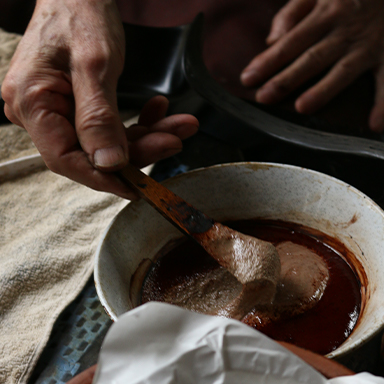
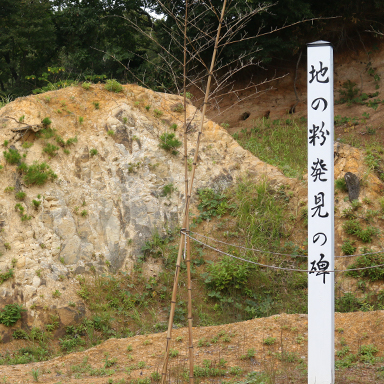
A wooden part made from a single wood plank
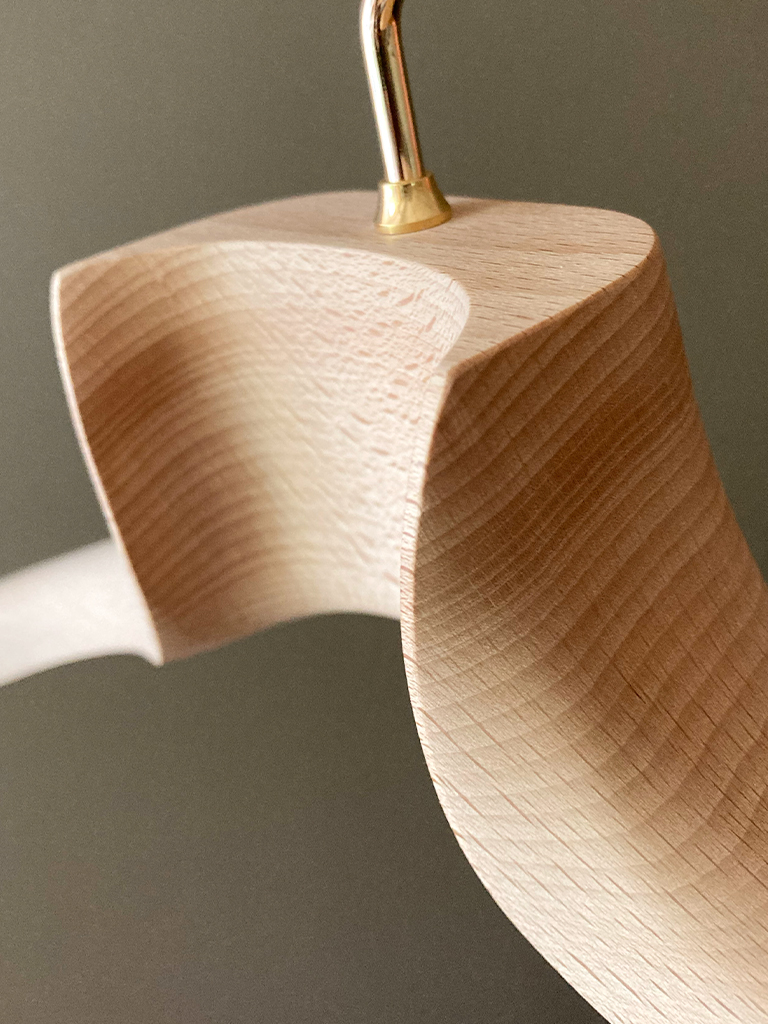
The wooden part is initially hand-carved at the NAKATA HANGER factory in Toyooka, Hyogo Prefecture. Wooden parts are carved out from a single wood plank using a Nenkin kanna, and carefully finished into a unique shape by carefully assessing the wood grain flow. These special hanger can only be produced by one craftsman at the only wooden hanger manufacturer in Japan.
In our pursuit of functionality to protect the beauty of clothes, we discovered a work of art. The hangers feature graceful curves, designed based on human shape and ergonomics, which is perfectly fit when hung. The polished hangers are then sent to Wajima for the next step.
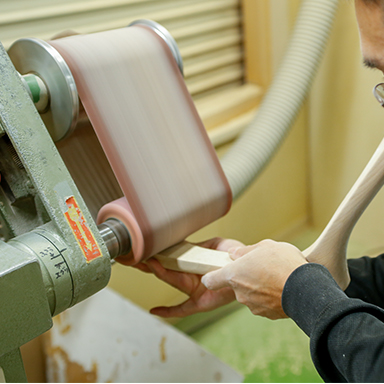
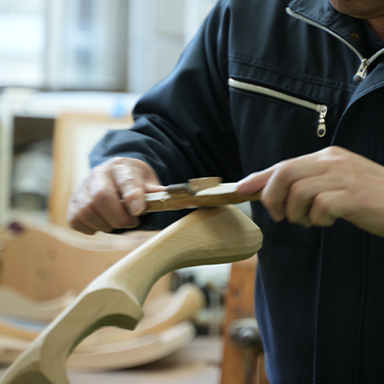
The Art of Topcoating
— Skill and Delicate Craftsmanship
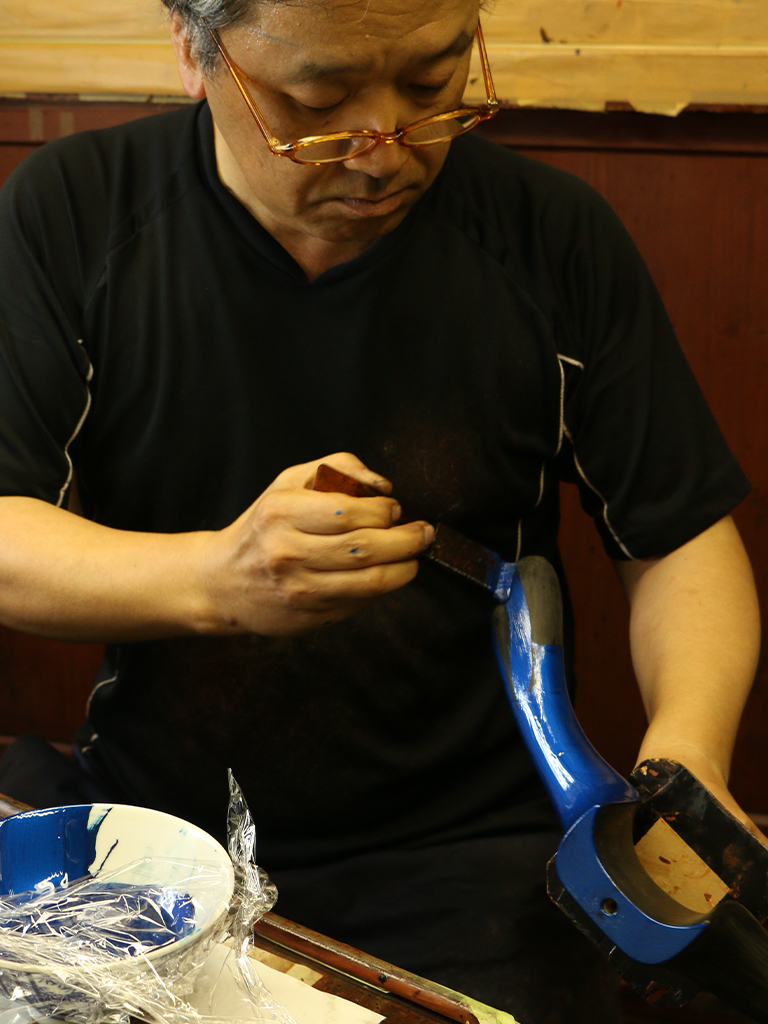
The top coat or the finishing process can be described as a battle against dust. Once dust gets on the topcoat, it forms spots and the work has to be redone, so the utmost care is taken with the air conditioning, clothing and even movements. The room where the topcoat is applied is treated like a clean room.
In addition to the traditional lacquer colors of black and vermilion, Wajima lacquer hangers also feature a shiny, bright blue lacquer known as 'pearl lacquer.' This choice reflects Mr. Okagaki's desire to encourage people to incorporate lacquerware into their daily lives.
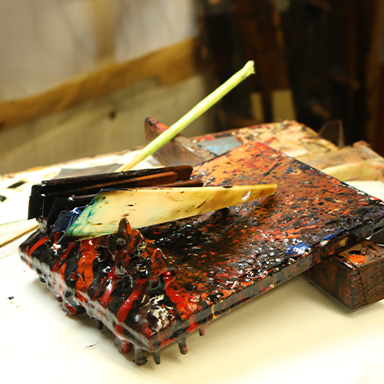
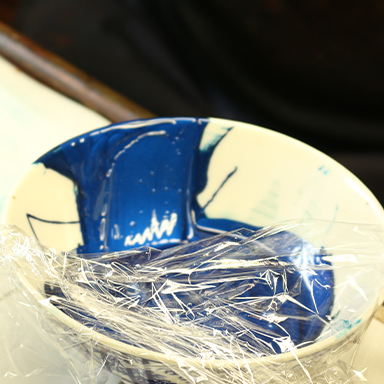
Art drawn in Maki-e

After the topcoat is applied, the next step is the decoration known as Maki-e. Maki-e is a technique in which gold, silver, or colored metallic powder is sprinkled on the surface of the lacquerware, and delicate patterns or designs are drawn with a fine brush.
The Wajima lacquer hanger is adorned with Mt. Fuji maki-e, inspired by the iconic works of Hokusai, the Japanese ukiyo-e (woodblock print) artist active in the early 19th century. Crafted with a design embedded into a hanger shaped like the number eight, which symbolizes Mount Fuji,—elevates this piece beyond a mere functional object and transforming it into a true work of art. The delicate technique of maki-e and bold design combine to give Wajima-nuri a special value and glamour to its owner.
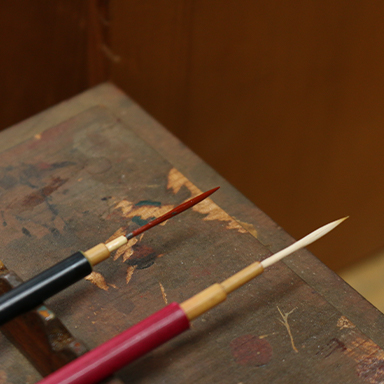
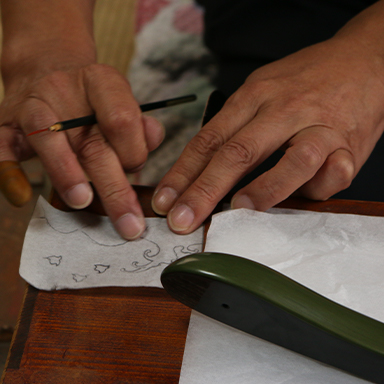
Roiro
— Bring out the gloss with bare hand
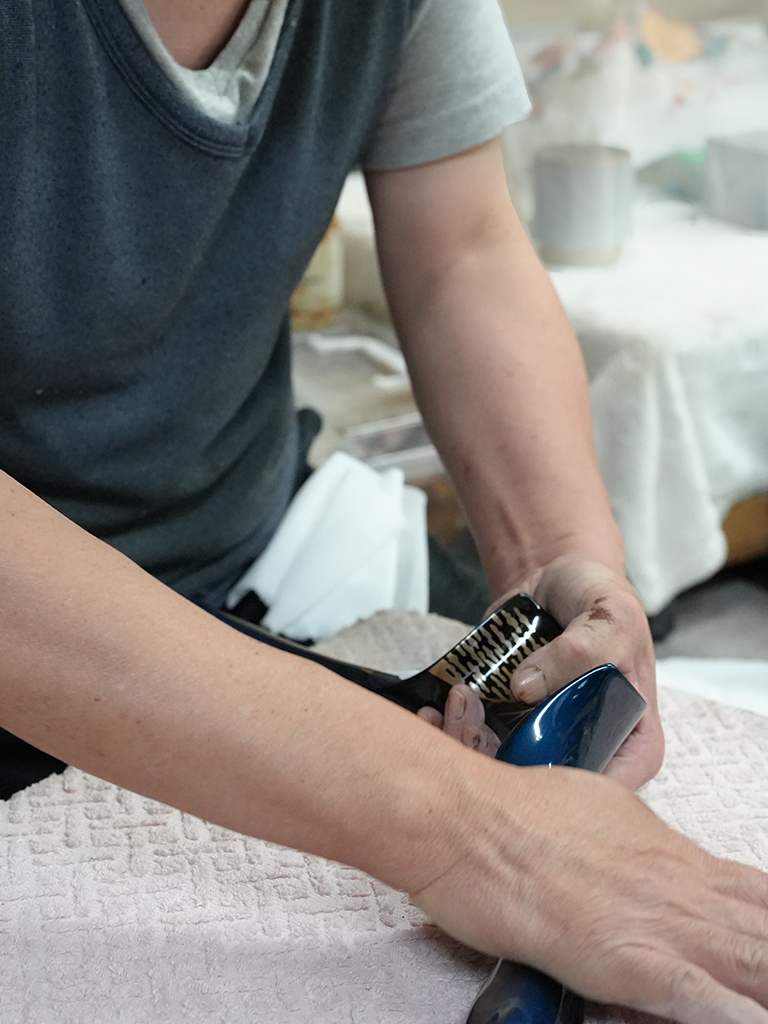
The Wajima-nuri process is subdivided into different processes, and the process of roiro is one of the most important finishing and polishing steps. To achieve a mirror-like reflection, the polishing process alone consists of 6 steps. The final step involves rubbing with fingertips and polishing powder.This delicate process is easily damaged by dry fingers, so it requires the right balance of oil on the hands. The craftsman must carefully protect their hands to ensure the process is executed flawlessly.

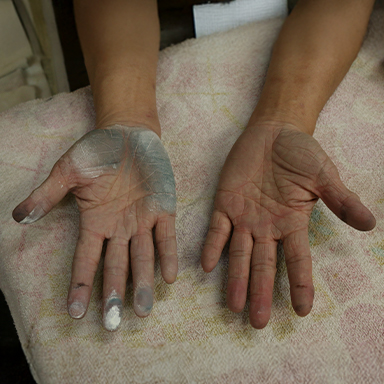
The Journey of
NAKATA HANGER and
Mr. Okagaki
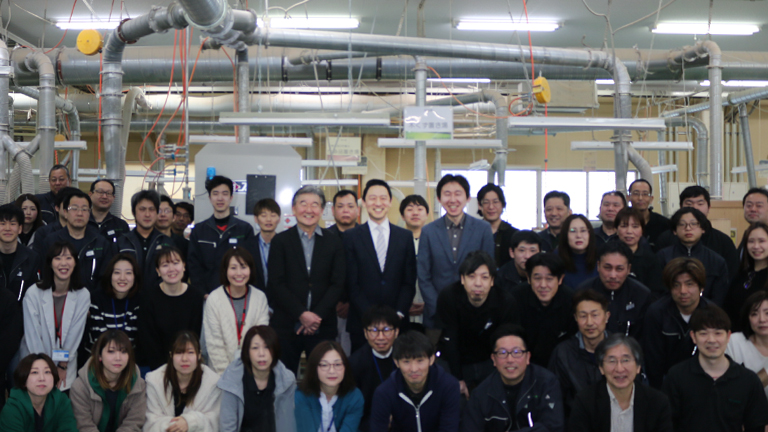
The idea of creating hangers with Wajima lacquer originated with Mr. Okagaki. Guided by the theme of “lacquer for everyday life,” he has brought Wajima lacquer to a variety of unique items—from umbrellas and pet bowls to globes and air purifiers. His products are especially notable for their vibrant colors, including greens and blues, which are rare in traditional lacquerware. Through this approach, Mr. Okagaki hopes to make lacquer a natural part of daily living. By applying favorite colors and maki-e designs, lacquerware transforms from a treasured craft into practical, everyday objects that bring elegance and color into everyday life.
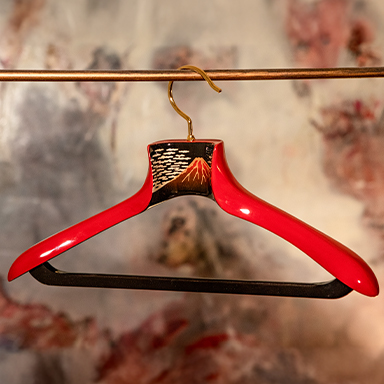
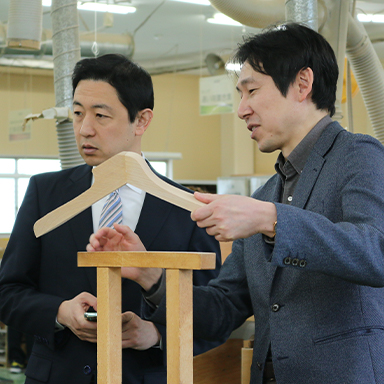
Pride which creating with your own hands

The town of Wajima is still in the process of rebuilding from the damage caused by the earthquake and torrential rains. Despite the challenges, a common desire unites the craftsmen: a strong passion to work. Some artisans have temporarily moved outside the prefecture to continue their craft, while others have returned to Wajima and are slowly resuming their work. Regardless of where they were, what they sought was not just support, but the income earned from the products created with their own hands.
Mr. Okagaki responded to their wishes. Even after the earthquake, he continues to support Wajima Lacquerware by expanding its sales channels in New York and abroad. His approach goes beyond business, it's an effort to bring hope to the craftsmen.
Some craftsmen still have not fully recovered from the damage, but Mr. Okagaki believes in them. He knows that the day will come when they can stand up and work together again. "I want you to keep sending them encouragement, so that one day,whether it's three or five years from now, they will be able to get back on their feet" said Mr. Okagaki. His words were filled with a hopeful vision for the future. The craftsmen of Wajima, inspired by his belief, continue to work towards a bright future alongside him.
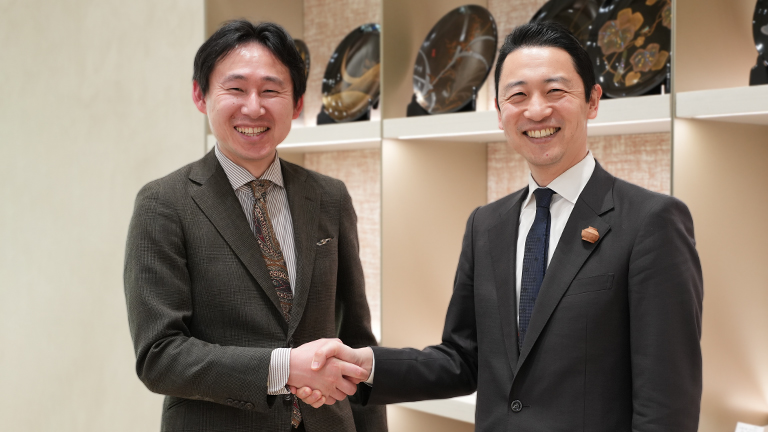
Related Content
For the latest information on Mr.Okagaki's exhibition lacquerware sales and other events, please see below.




